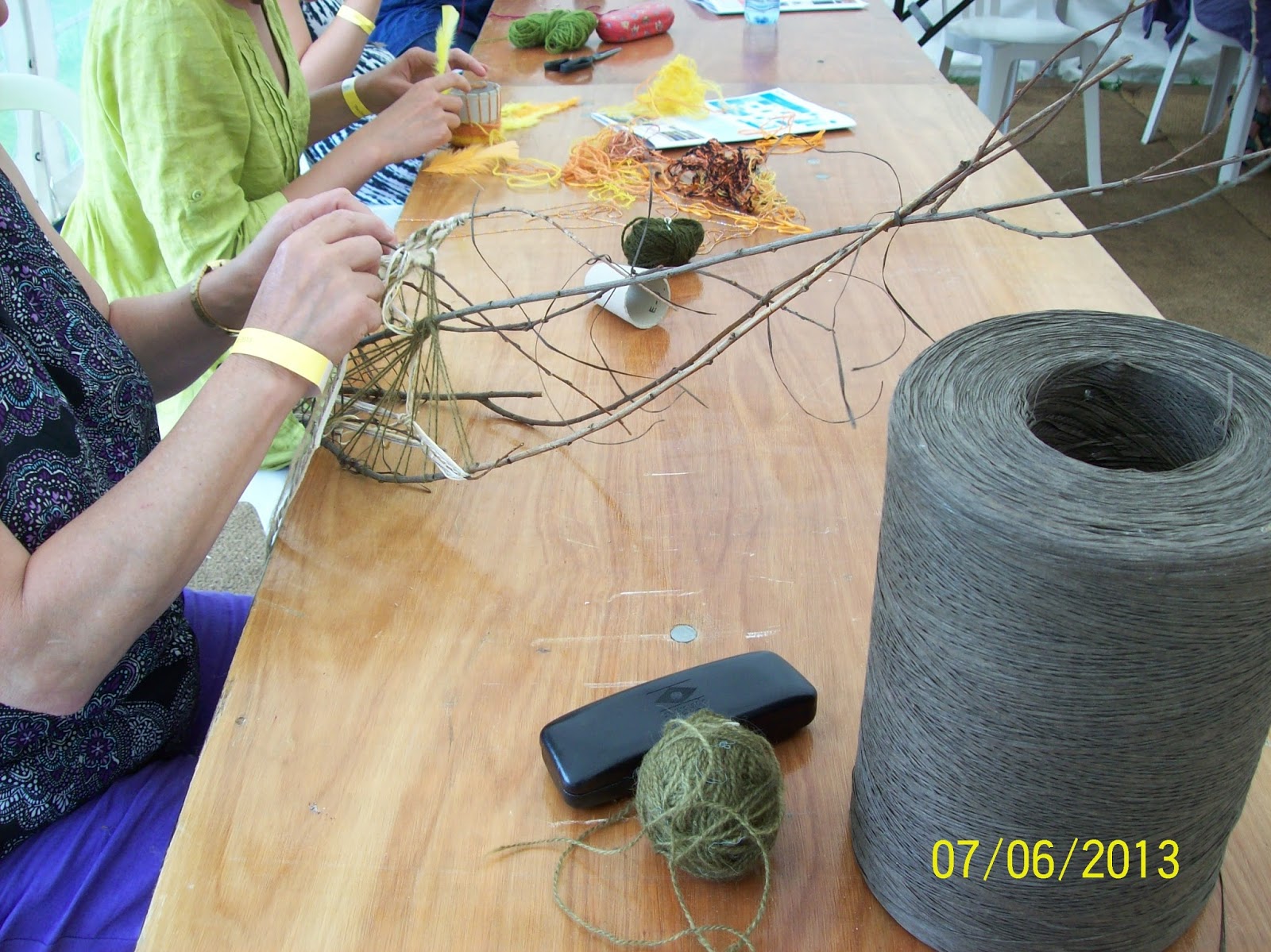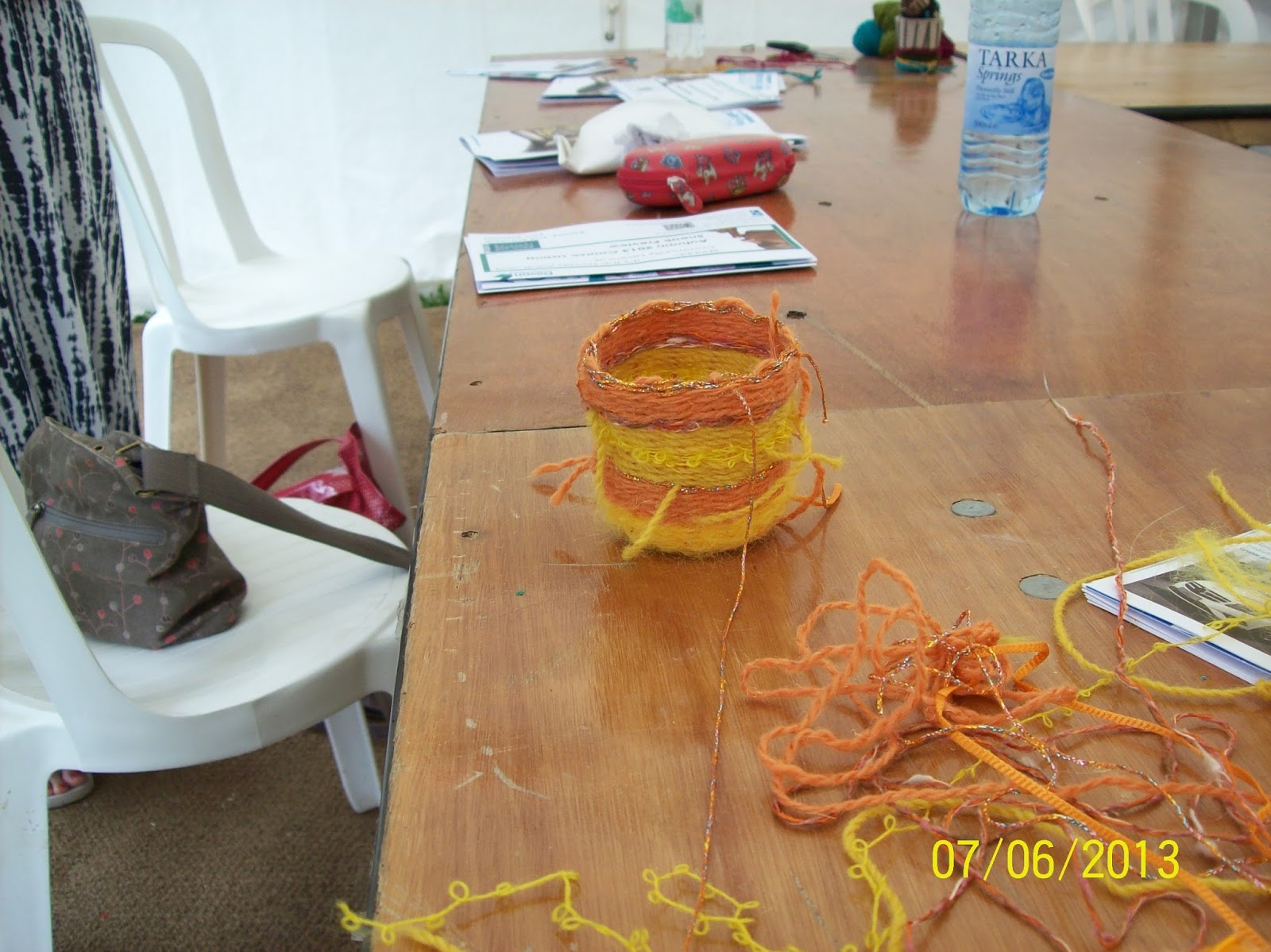May was busy with lots of dyeing and the best way to show you is to post some photos. Who says natural dyes are boring?!
A spinner always needs fibres and I have my silkworms but now I have some sheep! Well, Nick Viney, at http//:www.leewood.co.uk and I have some sheep! This year we introduced some coloured Wensleydales to the flock and they are delightful!
So what else have I been doing? Well the silkworm season is in full swing and I have caterpillars chomping away all day and all night. I have been asked to give a talk at the V&A in October, and hope I will have some live cats to take with me. The Eri moths are continuously brooded, so as long as they don't eat us out of privet, I might have some of those. The photo at the left shows a large tussah caterpillar and some baby eri caterpillars for size comparison - there is about 4 weeks age difference and the tussah will be spinning soon.
The other caterpillar is a calletta and you can just see a new, incomplete cocoon in the centre of the photo with the caterpillar still visible within it. Within a few hours the cocoon will harden and the cat will be out of sight until it emerges as a moth.
Not done a lot of spinning but I've been washing fleece, all summer it seems, though have speeded up considerably since I've been using the fermented suint method - soaking the fleece in rainwater in a warm spot until the natural cleansers in the fibres do the job for me. This is not the same as just soaking in cold water - it needs to be warm, a lid needs to be on the soaking vessel and the fleece needs to be quite greasy, at least to start the bath. The drawback is that taking the lid off to inspect the contents can be quite an unpleasant experience - if you don't like farmyard smells, I don't recommend it. Now the fibres are clean I can get on with my next excitement, using the knowledge I gained in the most fantastic week long course with the superb Michel Garcia. I am an unashamed Garcia Groupie!
Before I move on the dyeing, I am going to post some pictures of one of this year's courses at the Bovey Tracey Contemporary Craft Fair. I taught Katezome, or flower hammering, in the morning and indigo resist in the afternoon. I don't have any photos of the afternoon but the morning produced some fantastic results.
The results were impressive, although the colours will fade quickly unless they kept out of the light. For a special card for a birthday or Christmas card perhaps, they are lovely.
Last week was something very special! I spent it at Chateau Dumas, about an hour from Toulouse, in beautiful surroundings with superb food, excellent company and one of the best courses I can remember - and I've done a fair few, including one with Michel in 2011! Michel Garcia is a treasure and we should all be so grateful to him for the amazing amount of research he has done to enable us to dye easily and safely with natural dyes. The details are for another day but these photos might give you a flavour of what we experienced.
More in the next episode....





















